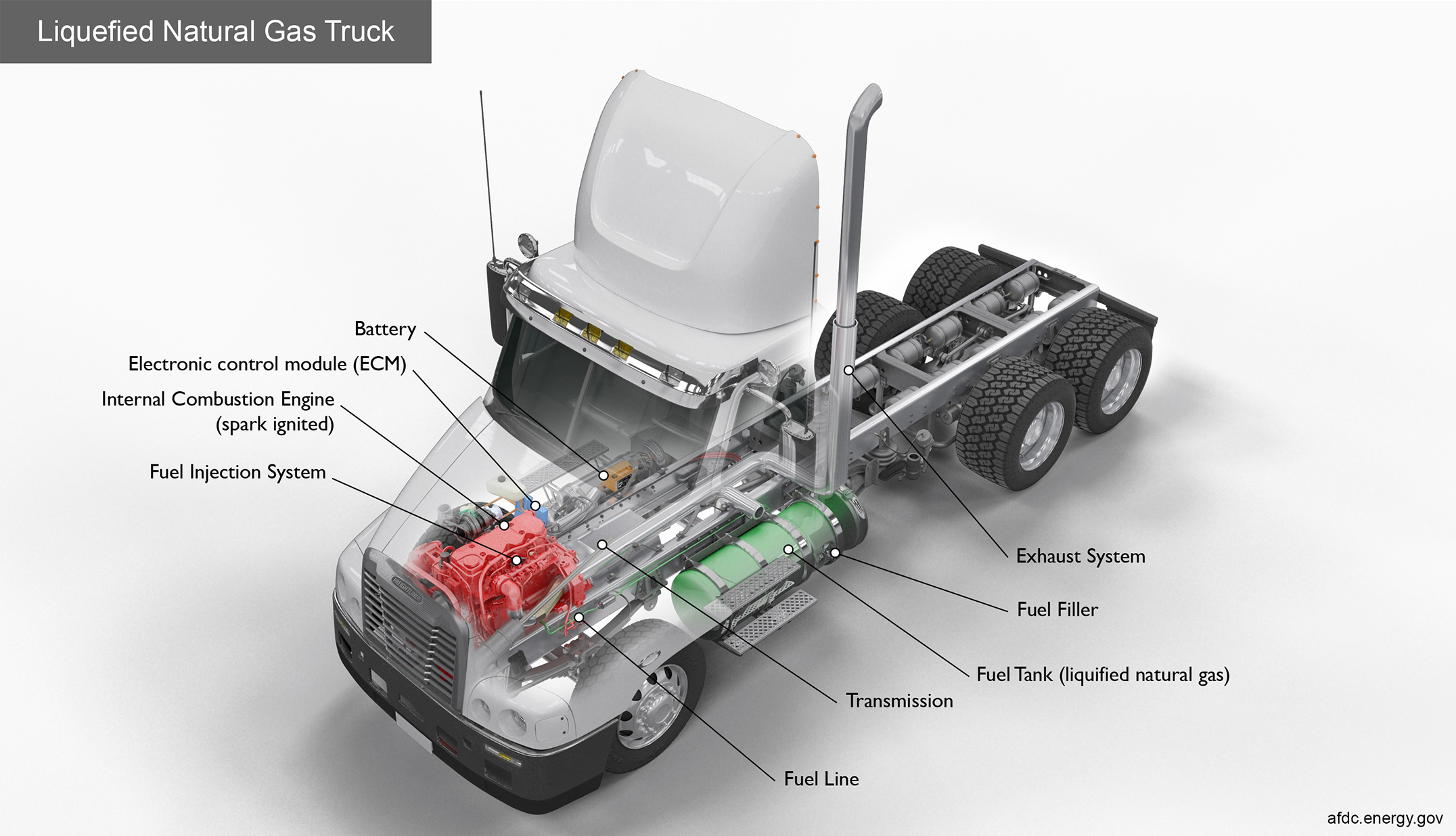How Do Liquefied Natural Gas Trucks Work?
Heavy-duty liquefied natural gas (LNG) vehicles work much like gasoline-powered vehicles with a spark-ignited internal combustion engine. The natural gas is super-cooled and cryogenically stored in liquid form, usually in a tank on the side of the truck. LNG is typically a more expensive option than compressed natural gas (CNG) and is most often used in heavy-duty vehicles to meet longer range requirements. Because it is a liquid, the energy density of LNG is greater than CNG, so more fuel can be stored on board the vehicle. This makes LNG well suited for Class 7 and 8 trucks traveling greater distances. Learn more about natural gas vehicles.
Key Components of a Liquefied Natural Gas Truck
Battery: The battery provides electricity to start the engine and power vehicle electronics/accessories.
Electronic control module (ECM): The ECM controls the fuel mixture, ignition timing, and emissions system; monitors the operation of the vehicle; safeguards the engine from abuse; and detects and troubleshoots problems.
Exhaust system: The exhaust system channels the exhaust gases from the engine out through the tailpipe. A three-way catalyst is designed to reduce engine-out emissions within the exhaust system.
Fuel filler: A nozzle from a fuel dispenser attaches to the receptacle on the vehicle to fill the tank.
Fuel injection system: This system introduces fuel into the engine's combustion chambers for ignition.
Fuel line: A metal tube or flexible hose (or a combination of these) transfers fuel from the tank to the engine's fuel injection system.
Fuel tank (liquefied natural gas): Stores liquefied natural gas on board the vehicle until it's needed by the engine.
Internal combustion engine (spark-ignited): In this configuration, fuel is injected into either the intake manifold or the combustion chamber, where it is combined with air, and the air/fuel mixture is ignited by the spark from a spark plug.
Transmission: The transmission transfers mechanical power from the engine and/or electric traction motor to drive the wheels.
